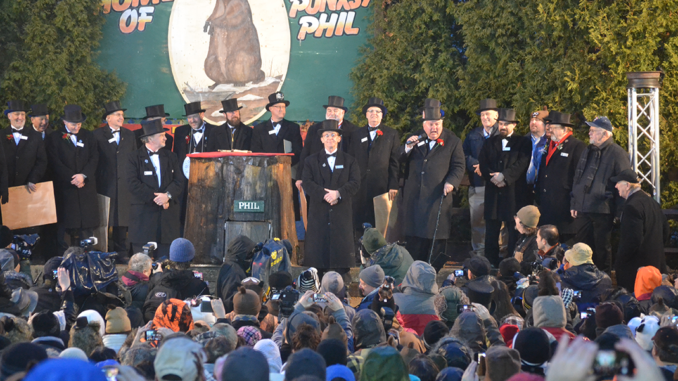
By Ken Sturtz
An ancient tradition, sort of
The modern celebration traces its origins to the early Christian holiday Candlemas, which commemorates the presentation of Jesus at the Temple. On that day – Feb. 2 – it became common to bless and distribute candles. Over time celebrators of the holiday adopted the belief that sunny skies meant a stormy, cold second half of winter. Roman legions brought the tradition to Germanic tribes, who expanded on the superstition: if the sun appeared on Feb. 2 a hedgehog would cast a shadow, predicting six more weeks of bad weather. German immigrants brought the folktale to America and replaced the hedgehog with the groundhog.
The weather capital of the world
Groundhog Day has become synonymous with Punxsutawney, Pennsylvania., but it wasn’t until 1886 that a group of groundhog hunters dubbed themselves “The Punxsutawney Groundhog Club.” The local newspaper issued a proclamation declaring Punxsutawney Phil to be the only weather prognosticating groundhog. Newspapers around the world began reporting Phil’s annual predictions. Each year on Groundhog Day members of the Inner Circle, who care for Phil, don tuxedos and top hats and trek to Gobbler’s Knob to coax Phil from his stump.
Phil comes to Central New York
Punxsutawney Phil has traveled around the country and even made appearances on national talk shows. But in 1994 Phil actually made the 300-mile trip to Central New York. By a coincidence, three teachers who were either born or raised in Punxsutawney — a town of less than 6,000 — all came to work at the Mexico Middle School in Oswego County. The teachers had staged Groundhog Day celebrations for years and one of them convinced her cousin, a member of the Inner Circle, to bring Phil for a visit. Hundreds of children got to meet the fury forecaster.
Groundhog Day goes Hollywood
Nothing has done more to raise the holiday’s profile than the 1993 blockbuster “Groundhog Day.” The film stars Billy Murray as mean-hearted weatherman Phil Connors who reluctantly journeys to Punxsutawney to cover Groundhog Day and becomes trapped in a time loop. The film’s immense popularity fueled greater turnout at Gobbler’s Knob. In the past it was typical for a few hundred people to show up. Today as many as 20,000-30,000 people descend on Punxsutawney on Feb. 2. Even the phrase “Groundhog Day” has entered the lexicon as a common way of describing something that happens again and again.
“Groundhog Day” wasn’t filmed in Punxsutawney
Although set in Punxsutawney, the movie was actually shot in and around Woodstock, Illinois., about 50 miles northwest of Chicago. Director Harold Ramis was from Chicago and enjoyed shooting in Illinois, but the movie’s producers were also looking for a location that could pass for a quintessential, but nonspecific, American town. They chose Woodstock after scouting more than 60 places. One advantage to Woodstock was that it had a town square that allowed filmmakers to put the groundhog ceremony at Gobbler’s Knob in the center of town. The real Gobbler’s Knob is a couple miles outside of Punxsutawney.
Expect disappointment if you’re hoping for an early spring
Punxsutawney Phil may be the prognosticator of prognosticators, but his track record of predicting an early spring is enough to give you the winter blues. According to records dating to the 1880s, Phil has seen his shadow (predicting six more weeks of winter) more than 100 times. Phil has reported not seeing his shadow and predicted an early spring just 20 times, most recently in 2020. Of course, Phil isn’t the only weather-forecasting rodent. Several other groundhogs make annual predictions, including Staten Island Chuck, who resides at the Staten Island Zoo.
